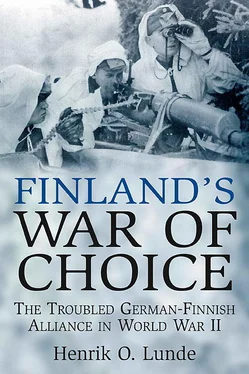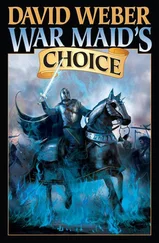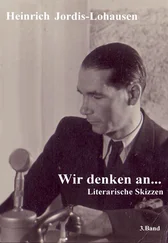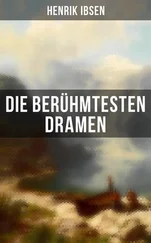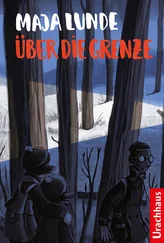Hitler’s decision raised the specter of a two-front war. Major General Alfred Jodl, Chief of Operations at the Armed Forces High Command (Oberkommando der Wehrmacht—OKW), briefed his subordinates on July 29, 1940, on the intention to attack the Soviet Union. The prospect of a two-front war led to a protracted argument. Jodl reasoned that a settlement with the Soviet Union was inevitable and it was better to make that settlement while Germany’s military prestige and power were as high as they were after a string of spectacular military successes. 44It is difficult to tell if these were Jodl’s own thoughts or whether he was merely a conveyor of Hitler’s views.
Hitler, despite his earlier views that the two-front war in World War I had contributed to Germany’s defeat and that a similar situation should be avoided in the future, now appeared to have changed his views or overestimated British helplessness. In the wake of the French capitulation he is reported to have told his military advisers that a campaign against the Soviet Union would be child’s play. 45
Despite Hitler’s views that the forces required to defeat the Soviet Union could be assembled within four to six weeks, this rosy scenario was quickly ruled out by the German military as impractical. 46In a meeting with Jodl on July 29, Hitler set May 1941 as the time for the attack and this was communicated to the other military leaders two days later.
The decision to attack the Soviet Union was not translated into a directive until December 18, 1940. 47Nevertheless, war was not inevitable and Hitler had acknowledged on July 21 that the Soviets did not want a war with Germany. This feeling was even stronger among some of the senior military commanders. As of July 30 the commander in chief of the Army, Field Marshal Werner von Brauchitsch, and the chief of the General Staff, General Franz Halder, favored remaining on friendly terms with the Soviet Union. These two senior officers preferred concentrating on attacking the British in the Mediterranean and at Gibraltar. 48
Despite these views, the German military did not overtly oppose Hitler’s decision announced the following day. The General Staff had, in fact, started preparing feasibility studies for a war against the Soviet Union several weeks earlier.
ONE
FROM FLIRTATION TO COALITION
Careful Approaches
Leonard Lundin writes that the period between the Winter War and Finland’s involvement on the side of Germany in its war against the Soviet Union in 1941 presents difficult questions for historians. 1The most important of these for our purposes was the responsibility of the Finnish political and military leaders for Finland’s unfortunate involvement in World War II.
Despite the lack of support from Germany in the Winter War, there was a rapid shift in both Finnish governmental policy and public opinion in favor of Germany soon afterward. 2The primary reason was Finland’s isolation from the world following Germany’s victories in Scandinavia and the West. To the Finns Germany looked like a rising star and the only country that could offer Finland some protection against the Soviet Union. 3
In June 1940, as Germany was preoccupied in the west, the Soviet Union moved to occupy the Baltic states. Simultaneously, the Soviets began to exert renewed pressure on the Finns. The pressure took the form of several demands:
1. Return all properties removed from Hanko.
2. Soviet or joint operation of the nickel mines at Kolosjoki (Nikel).
3. Demilitarization of the Åland Islands.
4. Right to send trains across Finnish territory to Hanko.
The Finns agreed to demands 1 and 3 while the others were made subjects for negotiation. At the end of July the Soviets charged that the Finns were trying to suppress the activities of Soviet supporters in the country. To the Finns these Soviet activities were ominous and could signal that military moves against the country were in the making. German intelligence shared this view and concluded that the Soviet Union could begin military operations against Finland in mid-August. 4
Conservative circles in Finland had argued for closer cooperation with Germany, and urged the government in that direction, as the Western Allies were going down to defeat in France and as the Soviets occupying the Baltic states had begun to exert pressure on Finland. 5The Finnish government needed little persuasion and its foreign minister, Rolf Witting, told the German ambassador in Helsinki, Wipert von Blücher, on July 4, 1940 that all efforts were directed at having a government oriented towards Germany. He also told Blücher that Finnish public opinion believed that the country would be able to reconquer its lost territories in the near future with the help of Germany. A month later Witting told Blücher that he wished to travel to Germany and meet with Hitler. 6
Blücher told the Finnish foreign minister that it would be objectionable to have a Finnish government which overtly favored Germany. He suggested that a government that continued a neutral posture but cooperated secretly with Germany would be more acceptable. This statement was too strong for the German government. Blücher was admonished by his superiors and told to refrain from expressions that could raise false hopes among the Finns. 7
However, the Germans soon began to show signs of reciprocity to the friendship expressed by the Finns. While this was no doubt tied to Hitler’s decision to attack the Soviet Union, it began before the July 31, 1940 conference at which Hitler announced his decision. 8
Another factor that influenced the change in German attitude involved the nickel mine concessions that were part of the Soviet demands on Finland. I. G. Farben, the German industrial concern, had contracted for delivery of 60 percent of the nickel ore production in July 1940. Finish nickel was of considerable importance to the German war industry, as was the supply of Swedish iron ore. The availability of these raw materials was an important factor in Hitler’s decision-making.
German belief that the Soviet Union might attack Finland in August 1940 caused Hitler to reinforce north Norway with units from all three services. Mountain Corps Norway, formed in June 1940, consisted of the 2nd and 3rd Mountain Divisions under General der Gebirgstruppe Eduard Dietl. The 2nd Mountain Division, located in the Trondheim area in August 1940, was sent to the Kirkenes area in the far north. Dietl was directed to prepare plans for a speedy occupation of Pechenga and the nickel mines at Kolosjoki in case of a Soviet attack on Finland. The planned operation was code-named Renntier (Reindeer).
The Soviets were well aware of the turn in Finnish foreign policy toward Germany. The Soviet ambassador to Finland, Ivan Zotov, warned Moscow of this new trend and opined that the Finns, feverishly engaged in building fortifications, might invite the Germans into their country. 9
The Transit Agreements
A German lieutenant colonel, Joseph Veltjens, appeared in Helsinki on August 18. He came ostensibly as a personal representative from Hermann Göring to Marshal Mannerheim. 10Veltjens’ task was to seek Mannerheim’s approval of a German proposal for the transit of supplies to German forces in north Norway and for the transit of German soldiers who were sick or on home leave. Göring was the director of Germany’s Four Year Economic Plan and one of Veltjens’ tasks was to firm up the option on the nickel mine concessions in Pechenga. 11For their part, the Germans proposed to provide Finland with military equipment and supplies. According to Mannerheim, he told Veltjens that he was not authorized to enter into any agreements of this nature and suggested that the proper person was the Finnish foreign minister. Veltjens replied that he was only authorized to deal with the marshal and that he was expressly forbidden to discuss the questions with the government or politicians. 12
Читать дальше
